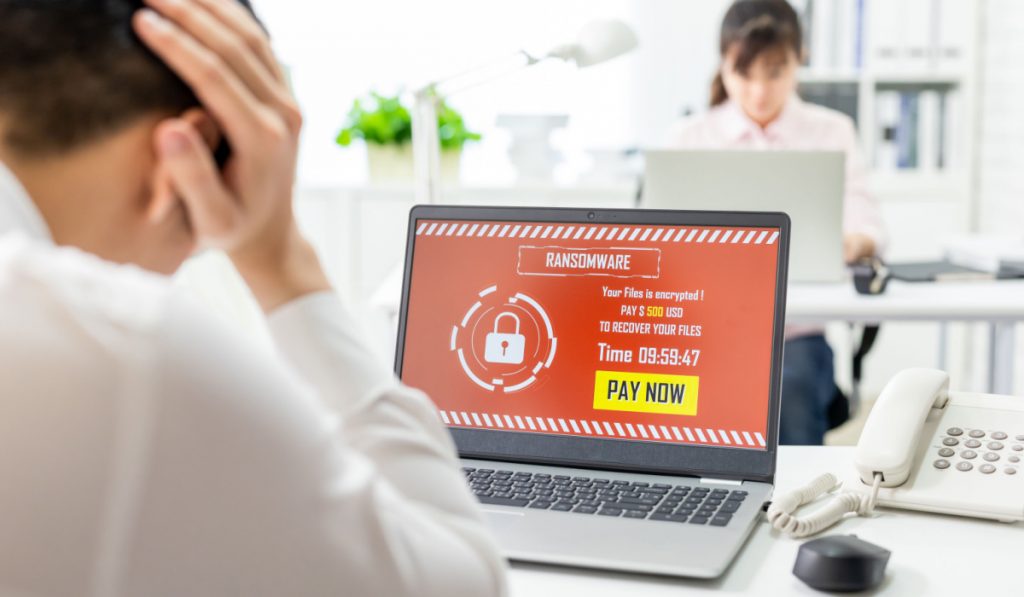Highlights:
- Attackers can find files to exploit, such as those containing private information that can be utilized in a later double- or triple-extortion attempt, by scanning the infected system. This allows them to learn more about the affected system, network and device.
- Ransomware commonly warns the victim of the infection by leaving an a.txt file on the desktop or displaying a pop-up message once files are encrypted and the device is disabled.
Shopping sprees are great. Drinking sprees are even better. Something that is NOT great is the frequency of cybercrime attacks making headlines and going on a spree!
Over the last few months, news portals have been pouring stories of state-sponsored ransomware attacks targeting critical infrastructure and encrypting victims’ data. Attacks using ransomware are taking a toll on businesses worldwide.
These attacks cause significant operational interruptions, and cybercriminals’ ransoms to decrypt the files and computers that have been compromised – keep growing.
The most enormous known ransom paid to date was USD 40 million, paid by CNA Financial, one of the biggest insurance companies in the United States, to regain access to its data and restart its operations.
Forty MILLION dollars is a lot of money!!
It’s even more money than most organizations spend on cybersecurity and for some…. it’s more than their whole organization’s IT budget.
The White House is just one of many government agencies that have called on businesses to strengthen their security in response to the rising tide of state-sponsored ransomware assaults in the United States and the Europe continent.
With attacks up 80% year-over-year, and hackers easily avoiding law enforcement action by using Ransomware as a Service or just rebranding, 2022 is shaping up to be the worst year on record for ransomware attacks.
In this blog, we’ll be covering the following topics: what are ransomware attacks, the history of ransomware, what are the causes of a ransomware attack, steps to take after a ransomware attack and more.
Why is ransomware a topic of debate and such a big problem worldwide?
Ransom malware, also known as ransomware, is malicious software that encrypts a user’s data or computer system and then requests a ransom payment to decrypt them. While “a virus locked my computer” may immediately come to mind for some, ransomware is typically categorized as a distinct sort of “malware”.
Let Us Begin with the History of Ransomware
The first ransomware appeared in the late 1980s. PC Cyborg was another name for it, as was the AIDS moniker! The files in the C: directory would be encrypted after 90 restarts, and the user would be asked to renew their license by sending USD 189 to PC Cyborg Corp.
At that time, there was little danger of being compromised because the encryptions used were so simple to crack.
Things changed back in 2004. GpCode was different. The ransomware used shaky RSA encryption to lock users out of their files and demand a ransom, and then ransomware became a severe problem.
As time passed, cybercriminals got innovative, they got creative. Egregor, a new form of ransomware, surfaced in the year 2020. The attackers used a “double extortion” strategy, encrypting the victim’s files, and stole sensitive information before threatening to publish the data online if the ransom was not paid.
What Are the Causes of a Ransomware Attack?
“Life is about choices.”
– Graham Brown
Guess cybercriminals chose the other path giving way to all the chaos and insecurity in business environments.
Multiple entry points, or “vectors,” are now available to ransomware attackers to compromise a system or network. Here are a few examples of the common entry points for ransomware:
Invasion using phishing emails and other forms of social engineering: Users are infected with ransomware when they fall for phishing emails and click on links or open attachments from those emails (which contain the malware disguised as an innocent-looking.pdf, Microsoft Word document or another such file).
According to a report from 2021, phishing and other types of social engineering are the most common ransomware attack vectors. It accounts for 45% of all ransomware assaults, as reported by the survey participants.
Software vulnerabilities and operating system: Cybercriminals regularly use previously discovered vulnerabilities to breach systems and circulate malware. Zero-day vulnerabilities, which haven’t been detected or patched by the security teams, are especially dangerous. Some ransomware groups are willing to pay other hackers for information on zero-day vulnerabilities to better prepare for attacks.
Credential theft: Users’ credentials can be hacked in several ways, including theft, sale on the dark web and brute force. These credentials might then be used to gain access to a machine or network and deploy the ransomware. The Remote Desktop Protocol (RDP), a Microsoft-created protocol for remote access to a computer, is frequently exploited by ransomware to steal credentials.
Other malware: Ransomware is often delivered to a device by hackers using malware already created in other assaults. In 2021, for instance, the Trickbot malware, designed to steal banking credentials, was used to propagate a form of Conti ransomware.
Drive-by downloads: Without the users’ knowledge, ransomware can be spread from device to device via infected websites. Exploit kits scan visitors’ browsers for online application vulnerabilities that can be exploited to introduce malware onto the device. Malvertising, or legal digital adverts that hackers have hacked, can infect computers with ransomware even if the user does not interact with the ad in any way.
To use these entry points, cybercriminals need not create malware. Some ransomware developers offer their virus code to other cybercriminals using “ransomware as a service” (RaaS) models.
Affiliate cybercriminals use the code to launch attacks and share the ransom proceeds with the original creator. Affiliates can make money off extortion without creating their own software and developers can boost their earnings by automatically initiating cyberattacks.
Ransomware distributors can sell their wares through online marketplaces or find affiliates through internet forums and other mediums. The largest ransomware organizations have spent a lot of money on affiliate programs.
Now that we know what causes a ransomware attack, let’s dig a little more into the varied stages of a ransomware assault.
What Are the Stages of A Ransomware Attack?
The following steps are commonly taken during a ransomware attack after hackers have gained access to a device:
Step 1: Reconnaissance. By scanning the infected system, attackers learn more about the device and network and locate files to exploit, such as those containing sensitive information that can be used in a subsequent double- or triple-extortion attempt. Most also try to get other credentials that let them travel laterally via the network and infect more devices with ransomware.
Step 2: Activation. Files are being targeted for identification and encryption by crypto-ransomware. The vast majority of encrypting ransomware makes use of asymmetric encryption, which encrypts the malware with a public key and stores the private key securely. The inability to decrypt the encrypted data without the hackers’ assistance is due to the lack of a private key, which the victims do not have. To further raise the pressure on the victim to pay for the decryption key, some crypto ransomware also disables system restore functionality or deletes or encrypts backups on the victim’s machine or network.
Ransomware that doesn’t encrypt data locks the user out of their device, bombards it with ads or does something else to make it useless to function.
Step 3: The ransom note. After the data is encrypted, and the device is deactivated, ransomware typically notifies the victim of the infection, usually by leaving an a.txt file on the desktop or displaying a pop-up message. The ransom note will detail the payment process—typically in bitcoin or some other untraceable method—in exchange for the decryption key or normal functioning being restored.
But like the old saying goes, “prevention is better than cure”. In the case of a ransomware attack, what can you do?
Fighting Back – Steps to Take After a Ransomware Attack
When security analysts track ransomware gangs, they see an ever-increasing gap between the attackers’ ability and motivation and the defenders’ experience and resources. Thus, IT and security operations outsourcing alone are not a viable solution.
Here are three steps that you can take:
- International cooperation is required between law enforcement authorities targeting ransomware groups, tracking payments and ultimately altering the operational risk for these groups to make it more expensive for them to undertake unlawful business.
- Organizational silos must be broken down so that cybersecurity, IT operations and risk management teams can all work together with a common language and set of goals. Who is responsible for the data storage and IT restoration? Where does security stand in terms of disaster recovery? When an emergency occurs, who is responsible for handling the Enterprise Risk Management and Business Continuity Planning?
- The introduction of further rules and regulations concerning the issue. The General Data Protection Regulation (GDPR) has dramatically raised collective awareness about reporting security breaches in infrastructures. On the other hand, tremendous efforts are required. While the (GDPR) is effective for private information, ransomware attacks that interrupt essential services may fall outside of its scope. More information is shared, more attention is paid, and maybe fines being levied on companies that fail to prevent or secure their infrastructure sufficiently will cause boardrooms to take the problem seriously.
To sum up
Ransomware is malicious software that encrypts data on a user’s computer using various encryption methods and then demands payment in exchange for decrypting or restoring the computer.
There is a growing need for security teams to be aware of the dangers posed by ransomware as it spreads to new industries, including the corporate world and the medicine-related fields.
Taking the appropriate measures to avoid, detect and recover from a ransomware attack without serious harm to the system can drastically lessen the attack’s potential impact!














